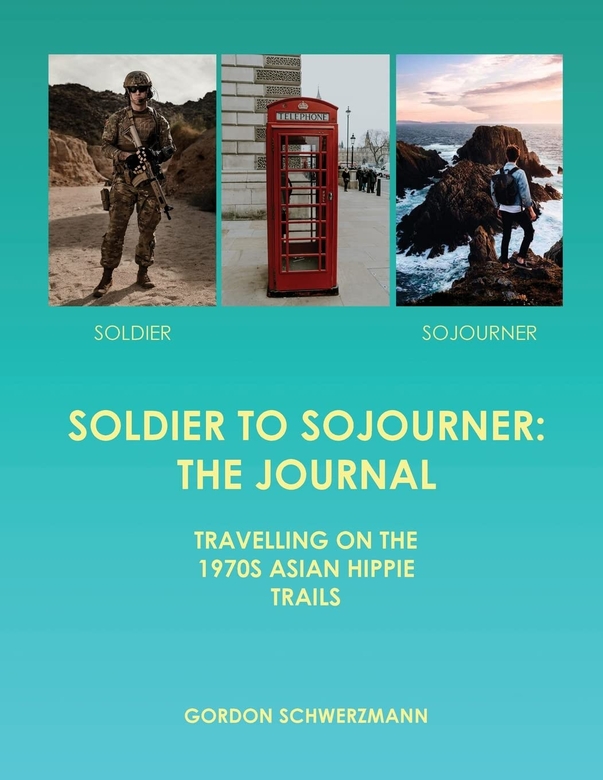
Soldier to Sojourner: The Journal – Traveling on the 1970s Asian Hippie Trails is a compelling personal and historical travelogue of Gordon Schwerzmann’s time in the military and as a tourist in Asia.
Beginning with his stint as an Army officer in Korea in 1970 and continuing through civilian trips to Japan, Nationalist China, Hong Kong, Macau, the Philippines, and Burma, the book is a wild and varied trip through exotic locales. Schwerzmann, a photojournalist and travel writer, documents his experiences through detailed descriptions, historical discourse and extrapolated musings, recollections of people he met, and a wide range of photographs featuring many stunning images.
Well-written with catchy and clever chapter titles, this journal-to-book is full of intriguing, absorbing material, whether or not you’ve visited these countries. Schwerzmann possesses an impressive amount of cultural, historical, art, music, and knowledge about food specific to each of the countries he writes about, and he’s a true explorer for information and authentic experiences.
Throughout the travelogue, there is a mix of narrative approaches, including stream-of-consciousness, confessional, and scholarly, which sometimes works and sometimes doesn’t, as it can confuse the narrative focus. While versatility in narrative voice can be a virtue, and Schwerzmann is effective and convincing in some of the choices he makes, certain chapters are told so differently than others that it affects the book’s overall flow.
On the one hand, this is the nature of a journal – over time, people do change, and there is a looseness in Schwerzmann’s storytelling that feels like you’re getting a front-row seat to his mind and his travels – sometimes respectful, sometimes irreverent, often sarcastic, and other times serious and professorial. However, this motif might be taken a bit too far, as the focus can change abruptly without enough context or explanation. There are a number of seemingly unrelated references, including lines from song lyrics, quotes from commercials, films, and literature, and tidbits about famous artists, film stars, painters, poets, and writers that often appear fairly randomly, interesting as these inserts may be on their own.
In addition, some chapters introduce entirely different narrative forms, where one is a play, one is in the voice of a Korean girl, and another is called “Episode 3” when there is no 1 or 2. In conjunction with these random switches and insertions, some chapters’ subject matter sometimes shifts unaccountably as well, most prevalent in the chapter about Korea – the first chapter, which takes up nearly a third of the book. Here, he also reveals his explicit sexual exploits, establishing a narrator whose double standard could be off-putting to some readers, setting the tone for the rest of the memoir.
As a result of these thematic and structural changes, it’s often difficult to understand a chapter’s intended focus, or to understand what kinds of comparisons the many cultural allusions are supposed to produce. That said, most of Schwerzmann’s reportage about his travels is informative and inspiring, and it’s hard to not be captivated by the adventures of a young American in Asia during those heady countercultural years.
With the book’s panoramic overview of almost an entire continent, the arresting visuals, and the author’s inimitable perspective, Soldier to Sojourner is an educative and entertaining travelogue.
Book Links
STAR RATING
Design
Content
Editing
Get an Editorial Review | Get Amazon Sales & Reviews | Get Edited | Publish Your Book | Enter the SPR Book Awards | Other Marketing Services






















Leave A Comment